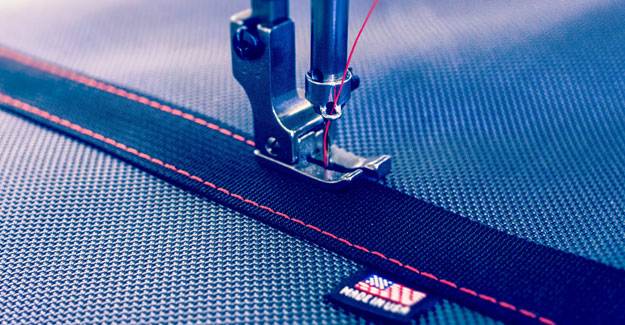
CustomFab USA's Success Mantra - Customer Service, HRM, Technology
Is it viable to manufacture textiles and apparel in the US? Shouldn't textile companies in the US relocate to survive? CustomFab believes that is not true. Over the last 25 years, the company has grown to become one of the leading sewing contractors in the US, offering a variety of high end medical textiles, military textiles, sporting goods, luggage textiles. Founded in 1990 by Don Alhanati in his garage with an ultrasonic welder and sewing machine, CustomFab USA began as a family owned business that worked tirelessly over the years to earn the trust of customers, growing the company into the industrial powerhouse that it is today - employing a dedicated workforce of over 300 people. As one of the nation's lead sewing contractors, CustomFab USA now occupies a 77,000 square foot, lean manufacturing facility in southern California, which has a dedicated R&D team, a Quality Assurance programme, and abundant manufacturing capabilities, producing over 2000 unique products every year. According to the company, "The mentality of catering to each customer's individual needs is sewn into our roots and drives our success. We rose to the top of our industry by providing personal customer service that is unparalleled by larger companies while being able to reliably manufacture items for customers that need to meet strict industry standards and have next to zero defects. It's no exaggeration when we say that people literally trust our products with their lives." Accessibility, reliability, technology So why did CustomFab plan to start manufacturing in the US? According to Danny Brown of CustomFab USA, "When we opened our doors in 1990, we decided to keep our production here in the USA, even though similar companies were moving operations overseas. “We did this because we saw a business opportunity to provide American companies the luxury of quickly accessing the manufacturing facility and interacting with the people producing their goods. By building a product from start to finish in one location, we could better and more reliably control its quality and protect our customers' intellectual property. Finally, with our access to the rapid emergence of new industrial manufacturing technologies, we saw a competitive fiscal edge emerging that we knew would eventually pay off in our favour if we continued to invest in our domestic workforce." New automated technology, manufacturing equipment, and ERP software have helped CustomFab USA streamline operations while improving quality and consistency of output. "We manufacture goods at a medium to large scale. Although we might have fewer employees than an overseas company with our production output, we manage to keep up with the competition by ensuring our team is trained to use the latest technology and are efficient at their craft," he adds. Higher education, skills, productivity command higher wages Maintaining a labour force in the USA is more expensive than in Asian markets. "However, one of the benefits of paying higher wages is that we can demand more of our employees in terms of their education and skill. We have a symbiotic relationship with the dedicated workers and craftspeople that keep our company running. The more we invest in them and their future, the more technology they can master, increasing manufacturing output. On average, a worker in our CustomFab USA facility today produces more than two to three times the amount a worker in the same position would have been able to a decade ago. We continue to expect the numbers to increase as skills become more specialised," states Brown. The company anticipates domestic textile demand will continue to rise, given the uncertainty of tariffs on finished goods and the disruption of overseas supply chains affecting the lead time of orders. Meanwhile, US exports of textile and apparel have been picking up. US exports stood at US$ 22.67 billion in 2017, 2.47% higher than in 2016. In 2018, exports had gone up to US$ 23.46 billion, a growth of 3.51%. In 2019 however, exports fell by 2.40% to US$ 22.90 billion. This can be attributed to the US-China trade-off, which disrupted the supply of inputs to the US textile and clothing industry, and exports to China, which is the fourth largest market for US textiles and apparel.
Textile Excellence
If you wish to Subscribe to Textile Excellence Print Edition, kindly fill in the below form and we shall get back to you with details.








